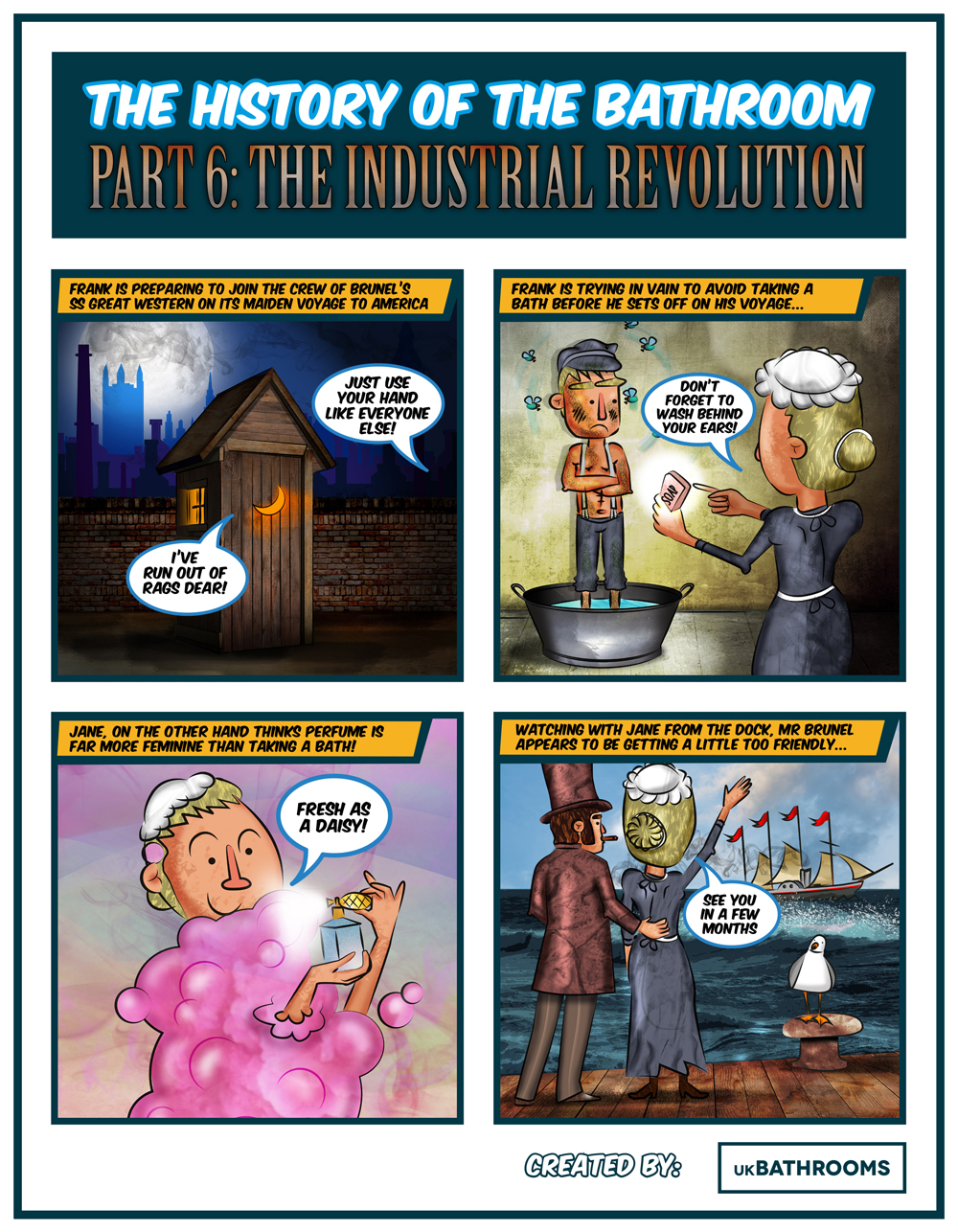Bathrooms through the ages part 6 – The Industrial Revolution
In part 6 of our look into Bathrooms through the ages we fast-forward to the Industrial Revolution. The Industrial Revolution was a defining period for British engineering, manufacturing and innovation which saw a huge growth in the size of British cities, although many still lived in squalid conditions. In 1801 (the year of the first census), the population of Britain was 9.3 million, but by 1841 it has swelled to 15.9 million, a 60% growth in just 40 years.
This caused a house building boom and saw the start of large scale terraced housing in and around major cities including London, Manchester and Liverpool. A block of up to 40 houses would have to share 6 toilets between them and with an estimated average of nine people living in each house, that meant each toilet could be used by up to 60 people.
The cesspits were emptied by the night-men who would load the sewage into a horse drawn cart before dumping it into the local river contaminating the water source. What made the matter worse was that it was the landlord’s responsibility to get the cesspits emptied. This cost up to £1 per cesspit, so landlord’s largely ignored the problem causing sewage to leak into the streets and causing diseases and other illnesses such as Cholera to become rife during the Industrial Revolution.
Baths were still a rudimentary item during the Industrial Revolution, but instead of wood they were now made from tin. They were filled with water collected from local water pumps, with the water heated slightly above the fire first. Tin baths were a fairly common household item during the early 1800’s, but because it was so time consuming to set up most people simply didn’t wash at all, instead using the tubs to do their laundry.
During the 18th Century cosmetics manufacturing moved from the home and into factories making them cheaper and more affordable for the majority of people. Pale skin and rouge were still highly fashionable, as well as having dark eyebrows. Some women even went as far as to wear fake eyebrows which were made from mouse fur and glued to the face.
Perfume was also a common commodity during the Industrial Revolution as the discovery of synthetic essences made production and cost much cheaper. It was so popular in fact that women would use it instead of taking a bath, which was a labour intensive and time consuming task.
The SS Great Western was and oak-hulled steamship purpose built for crossing the Atlantic. It was the largest passenger ship in the world between 1837 and 1839, and was designed by Isambard Kingdom Brunel.
The SS Great Western sailed to and from New York 45 times in 8 years until the Great Western Steamship Company went out of business in 1846. The ship was sold to the Royal Mail Steam Packet Company and was in service until 1856 before being scrapped.
